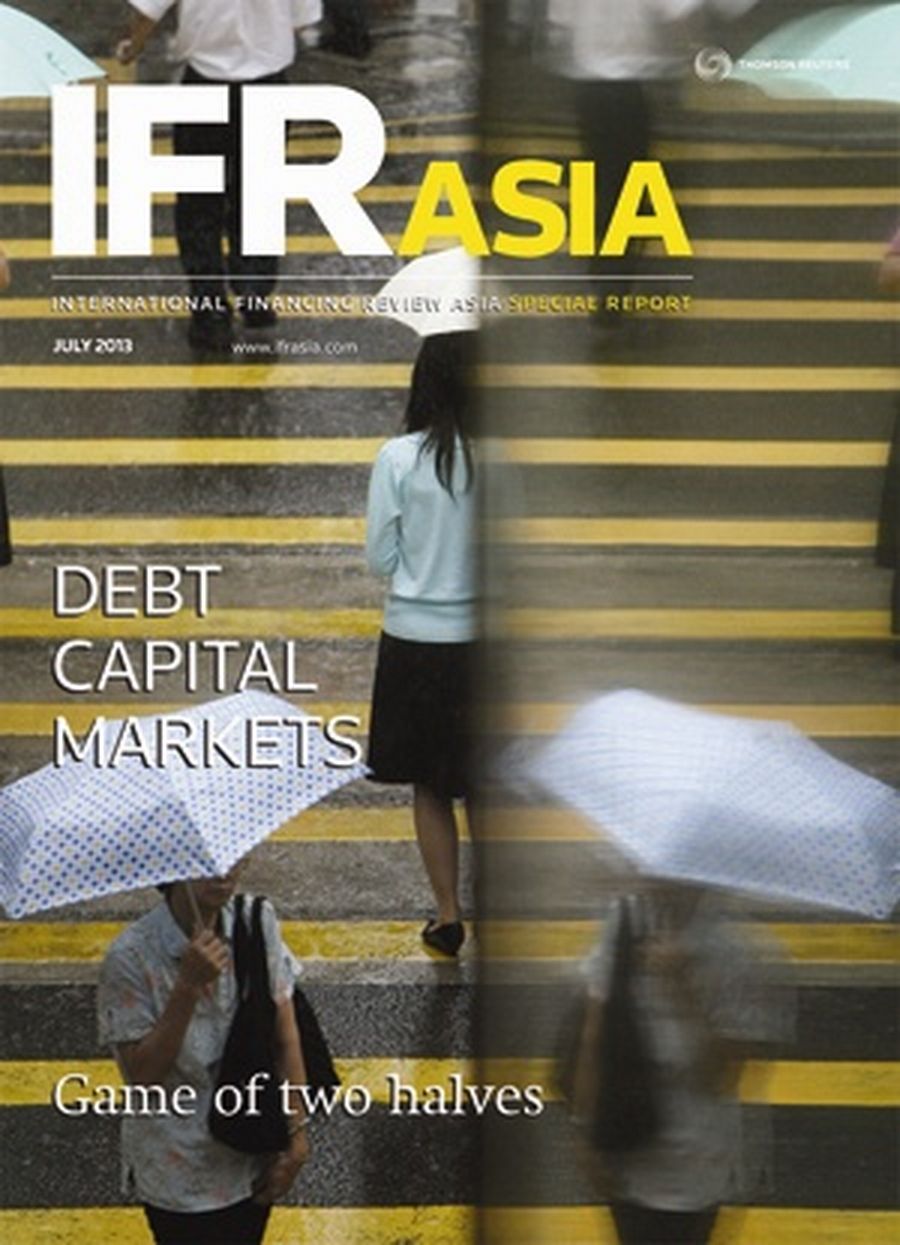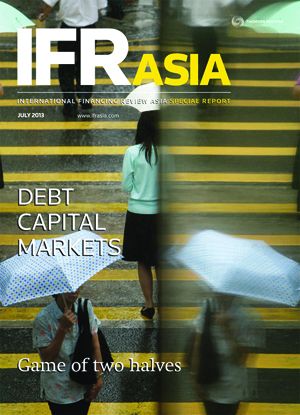
Source: Reuters/Paul Yeung
People are seen in the reflection of a polished wall on a rainy day in Hong Kong.
After the first half of 2013 broke all manner of records for the volume of debt offerings from Asia – not to mention revenues for underwriters – the inevitable correction in Asian credit was always going to be painful.
The surging volatility in the US Treasury market in May–June was a nasty wake-up call for anyone assuming Asian bonds were a one-way bet. Prices tumbled across the board, regardless of credit rating or currency. Holders of long-term US dollar bonds from Singapore’s Triple A rated Temasek lost 15% in price terms in that two-month period, while Indonesia’s 10-year rupiah government bond yield blew out by nearly 200bp.
Primary markets, predictably, ground to a halt as issuers struggled to come to grips with the new cost of funding and investors worried of worse to come.
Even alternative markets that had seemed promising ended up offering little. Dim Sum volumes evaporated after a liquidity squeeze rattled China’s domestic money markets, raising fears that authorities might be sacrificing growth for reform.
The Samurai market, too, has been wrestling with its own demons. While overseas credits look well positioned to benefit from portfolio rebalancing as the Bank of Japan squeezes investors away from government bonds, it looks to be still too early for many of the country’s notoriously conservative fund managers to make that switch.
This new backdrop poses fresh challenges across the entire cross-section of Asia’s debt capital markets.
Investors need to learn to differentiate between individual credits and structures, reviving a skill that mattered little over the past couple of years. Bond prices will not always go up.
Issuers, too, need to adjust their expectations: waiting for funding costs to fall again may prove an expensive mistake. The choice between bonds and loans may no longer be so straightforward, just as the US dollar market is not the only game in town.
Perhaps, the biggest challenge, however, falls on the arrangers, who bring new issues to market. It is already clear that capital raisings can – and will – go wrong. The well-regarded Korea Finance Corp aborted a euro bond in mid-July, while the first Indonesian high-yield bond in months quickly dipped below par.
The risk of mispricing a deal increases dramatically in volatile markets, and underwriters will need to be careful not to upset their issuer clients or alienate investors.
Shakier markets will expose any failings in the quality of advice coming from banks and advisers or in their ability to deliver on promises. That, of course, should be a challenge the arranging community will relish.
To see the digital version of this report, please click here.
